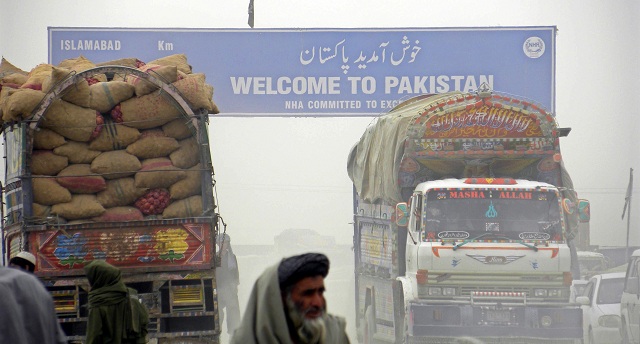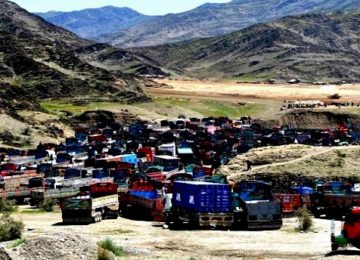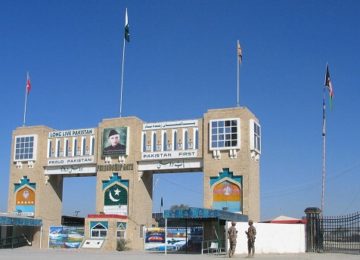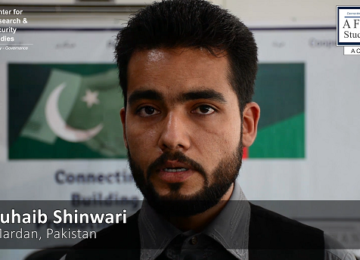Although Afghanistan has been a key exporting destination for Pakistani goods for the past two decades, a drastic downslide has been seen in the trade between the two countries during the last five years as Pakistan’s exports to Afghanistan have come down from $2.6 billion in 2011 to $1.2 billion in 2016.
This was stated by Dr Vaqar Ahmed, Sustainable Development Policy Institute (SDPI) deputy executive during his lecture at the 8th Pak-Afghan Youth Dialogue titled “Joint Offensive Against Poverty: Pakistan & Afghanistan’s Common Enemy” organised by the Centre for Research and Security Studies (CRSS) on Tuesday.
The purpose of the dialogue is to promote a healthy discourse between the youth of Pakistan and Afghanistan and to bridge the gap of mistrust that exists between the two.
Vaqar mainly attributed the downward trend in the trade between the two countries to the heightened security protocols on the Pakistani side, improved manufacturing facilities in Afghanistan, the rise in Afghanistan’s trade with Iran and other regional economies and the increase in informal trade, bringing the export to less than $1 billion at present.
He said that in March 2017, the most popular commodities that found their way to Afghanistan from Pakistan included rice, wheat flour, cane and beet sugar, sucrose, sugar confectionery, household articles, and plastics.
Among the export of services, Pakistan provided business and government-related services, telecommunications, information technology and transport, and health services. During the same month, Pakistan’s major imports from Afghanistan were coal and cotton, he added.
He said that like trade in locally-produced goods and services, its flow has also reduced from 75,000 containers in 2010 to fewer than 49,000 containers in 2016 mainly due to the reduced demand of NATO for transit services, the recent slowdown in Afghanistan’s economy and higher flows of transit via Iran and Central Asia.
However, he lamented, that there are 11 notified trade routes between the two countries, but trade is allowed only through three routes, urging that the community on both the sides should be allowed to do business.
He said that there are several countries which had severe issues, but they didn’t disturb their trade ties such as India, China and South Korea, North Korea.
He also said that among other things that the cross-border traders were worried about, two of those are the security of merchandise and inadequate banking facilities.
A critical study of the official documents on both sides, particularly the minutes of the Joint Economic Council (JEC) meetings, reveals that several mutually-agreed decisions have yet to be implemented on.
For instance, both sides had promised to open more trade and transit routes, streamlining visa-related facilities at the border along with the provision of multiple long-term visas for business persons, but no progress has been made in this regard.
Apart from the need to have a more expanded network of Pakistani banks in Afghanistan, there are challenges in finance and insurance sectors that are preventing the growth of trade.
He said that businessmen resort to the Hawala system since there are no bank branches or formal money exchange companies near the Chaman border.
Moreover, he suggested that Pakistan’s Federal Board of Revenue (FBR) and its counterparts in Kabul need to revisit the tariff and para-tariffs imposed on the incoming goods from both sides.
He suggested that both the governments should sit together and amicably resolve their mutual issues because due to such inflexible stances by both the sides ultimately, it is the loss of the consumers on both sides who will end up paying for a breakdown of trade diplomacy.
Despite the above-mentioned complex issues, he said, the business community remains bullish on the APPTA and has already proposed that this arrangement should include an investment and a ‘trade in services’ clause. This can strengthen the cross-border value chains and also promote trade-led investment in Afghanistan.
He urged the need for a meeting of the representatives of Afghanistan Pakistan Joint Chamber of Commerce and Industry with the presidents of both the ECO Chamber of Commerce and Industry and SAARC Chambers of Commerce and Industry with the request to send a formal communication to both heads of states.
The apex chambers of commerce on both sides need to invest resources to showcase their argument in print, electronic and social media, and highlight the loss to producers, traders and consumers as a result of the lack of bilateral trade cooperation.
Besides, a detailed orientation may be organised for economic journalists in Kabul and Islamabad, so that repeated messaging is ensured through various forms. Development partners will also need to invest resources in helping trade advocacy efforts on both sides.
The report originally appeared in Pakistan Today on January 17, 2018. Original link.
Disclaimer: Views expressed on this blog are not necessarily endorsed or supported by the Center for Research and Security Studies, Islamabad.








